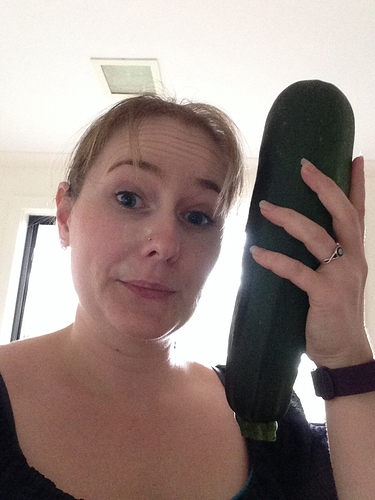The problem we have in world agriculture, whether its chemical or organic, both are striving for increased sugars within the plants. Both adding to the global carb addiction (creating diabetic plants that we can medicate  ) Both are missing the role fats play within the plant and soil and how plants control their bacterial/fungal dominance and pests trough oils. For a keto diet we should look closer at the quality of our salad an veg on our plates as these play a massive role in our wellbeing to go with all that bacon fueled energy. Not to be drawn into the sugar filled sweet veg and trust your taste buds for the full flavoured nutritional and fat filled veg.
) Both are missing the role fats play within the plant and soil and how plants control their bacterial/fungal dominance and pests trough oils. For a keto diet we should look closer at the quality of our salad an veg on our plates as these play a massive role in our wellbeing to go with all that bacon fueled energy. Not to be drawn into the sugar filled sweet veg and trust your taste buds for the full flavoured nutritional and fat filled veg.
Keto vegetables
A zucchini I grew in my garden, made lasagne with it & still had 3/4 left.
Maintaining my organic veggie garden is proving to reduce my stress levels after a hard day at work, giving me 2 for the price of 1!
That’s the fun of growing, working out what to do with all the bounty of the garden. I’ve set up chefs gardens before and the hardest part is changing their mindset from ‘what do I want’ to ‘what have I got’ Enjoy that great looking zucchini !!!
Grow your own heirloom seeds is the solution to the problem which you speak.
I’ve had great luck with seeds from here.
Heirloom varieties are great so many modern varieties have been breed for increased sugar, take the modern apple you find on the shelves nowadays its twice the size and full of sugars compared to an apple just twenty years ago but in terms of nutritional advice an apple is still an apple. (lots of bad math in nutrition  )
)
When you plant that heirloom seed, how you set up the ground and feed that plant still determines wether you set it up to build carbs or be nutrient dense, the same as your diet sets yourself up to be a carb loving sugar burner or ketogenic energised fat burner.
It’s great that so many people are growing their own these days and getting so many benifits its not just about the eating but I do enjoy that bit 
Leftover ham / bone
We are currently growing Warrigal greens (aboriginal australian Spinach), Silverbeet, Turmeric, Peppers, jerusalem artichokes and Potimarron.
Gonna dig up a new garden bed next week and put in some more leafies.
Oh we’re also growing Herbs, Bay laurel, Parsley (which sadly has bolted), lemon thyme and I’ve killed a few rosemary bushes so now I steal it from the neighbours.
We also forage for Fennel seed/pollen and Blackberries around Canberra in season.
Remember Richard to pick your leafy greens in the morning, plants dump up to 60% of the sugars they produce all day from the leaf to their roots over night to feed their microbiome so lower in sugars in the morning than evening.
Lucky you to be able to grow the greens… It’s too damn hot up here (QLD) at the moment  seeds just aren’t sprouting… Would love to grow spinach again, was soo good when I had home grown stuff!
seeds just aren’t sprouting… Would love to grow spinach again, was soo good when I had home grown stuff!
I did not know that … but it makes sense that a plant would cycle between storage and use of starch like we do our primary energy storage substrate (Fat).
Yep there’s alot of cross overs between plant and human nutrition, it’s all chemistry. It was questions and answers i had in the garden that lead me to finding Keto and my own nutrition.
Wow! Really? That really is quite surprising/amazing (the point of putting the sugars in the root at night).
I’m not doubting it, but would really like to see the science or a reference to read more. Any ideas where I could find that?
In a similar sense, would potatoes (or any root vegetable) be lower sugar or starch late in the day?
Interesting how they store their excess energy in the roots, and if we eat those roots, we gain the excess energy (fat). Cool.
“The plant translocates 50% of all of the glucose it produces down to the roots each night, and 60% of this is squirted out into the root zone (the rhizosphere) to feed the hoards of microorganisms surrounding the roots. In the most classic example of the universal law, “give and you shall receive”, the plant is rewarded many fold for its glucose gift. In return for their daily feed, the soil microbes fix nitrogen from the atmosphere, solubilise locked-up phosphorus, recycle minerals from crop residues, remove toxins, produce plant growth stimulants and protect the plant from pathogens. What has this mutually beneficial deal got to do with boron? Well, quite a lot as it happens. There is a little trapdoor in each chloroplast which opens just before dusk to allow the glucose, intended for the roots, to flow freely from the factory. Boron governs the opening of this trapdoor. If your plants are boron deficient the glucose stays trapped in the chloroplast and the beneficial bugs, who deliver all nutrients to the plant, miss out on their daily tucker.” - http://blog.nutri-tech.com.au/the-role-of-boron-much-more-than-a-synergist/
Before I switched to the dark side and keto, I spent several years planting an orchard of more than 100 fruit tree. I am now giving away buckets of food to colleagues at work and anyone else that will take it! Luckily the veggie garden is thriving as well!
Our property was part of a old apple orchard with lots of apple trees. The trees are beautiful with apple blossoms but the apples are not worth eating, which is a good thing.  The deer eat them. There are wild raspberries and blueberries here that are yummy. We plant a veggie garden, too.
The deer eat them. There are wild raspberries and blueberries here that are yummy. We plant a veggie garden, too.
Fascinating. I never thought about what plants did after photosynthesis. I’m geeking out!
The plants nutritional make up can change alot at different stages of growth, seed to sprout, growth to fruiting. It’s using different chemistry at different times to do this and interacting with different microbes at different times to do this. One veg can have many different flavours at different times. You can have good quality ‘fat plants’ that are worth putting in your mouth or really nutritionally empty watery ‘skinny plant’ that just aren’t worth it. A broccoli just isn’t a broccoli the variations in nutrition can be huge, that’s where bad math comes into nutritional advice 
Apples can also mean lots of bacon 

 http://agrariannation.blogspot.com.au/2011/04/1849-hogs-fattened-on-sweet-apples.html?m=1
http://agrariannation.blogspot.com.au/2011/04/1849-hogs-fattened-on-sweet-apples.html?m=1
Funny you should say that - I have a couple of pigs that I’m eyeing up! Great idea thanks!

